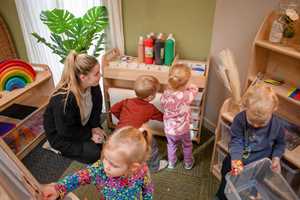
Lesson Ideas and Activities
Integrating STEAM play and learning into your school playground environment
STEAM is a forward-thinking, integrated approach to learning that uses Science, Technology, Engineering, the Arts and Mathematics to guide children’s questioning, critical thinking and dialogue.
The idea is that children will learn how to take thoughtful risks, engage enthusiastically in experimental learning, work well with others and work through creative processes.
It’s all about encouraging the innovators, educators, leaders and learners of the future!
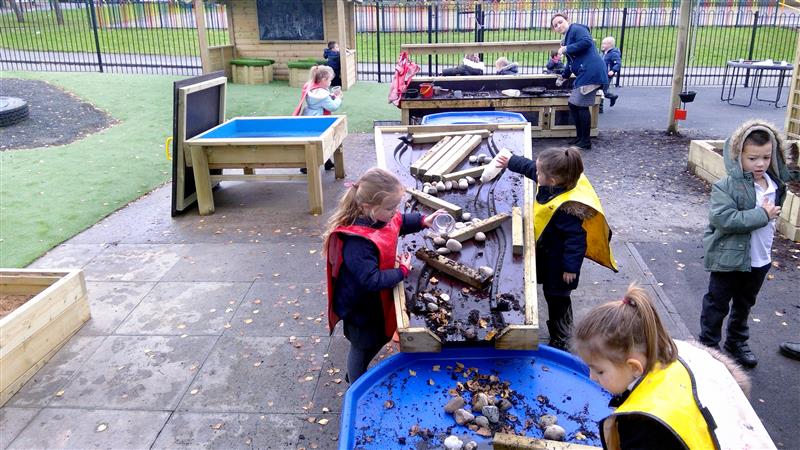
STEAM is in the essence of much of what we do here at at Pentagon Play. We have created a huge range of outdoor educational play and learning products for schools and nurseries that are absolutely ideal for, and go hand in hand with, STEAM play and learning.
We promote positive outdoor learning and play experiences, hands-on kinaesthetic learning, creative problem solving, investigation and discovery, experimentation and yes, getting a bit messy and generally having a lot of fun in the process!
With this in mind, we thought it would be useful to explore outdoor STEAM play and learning in a bit more detail: what it involves and why it is so important and how to set up your school or nursery playground ready for some first-class, outdoor STEAM learning experiences.
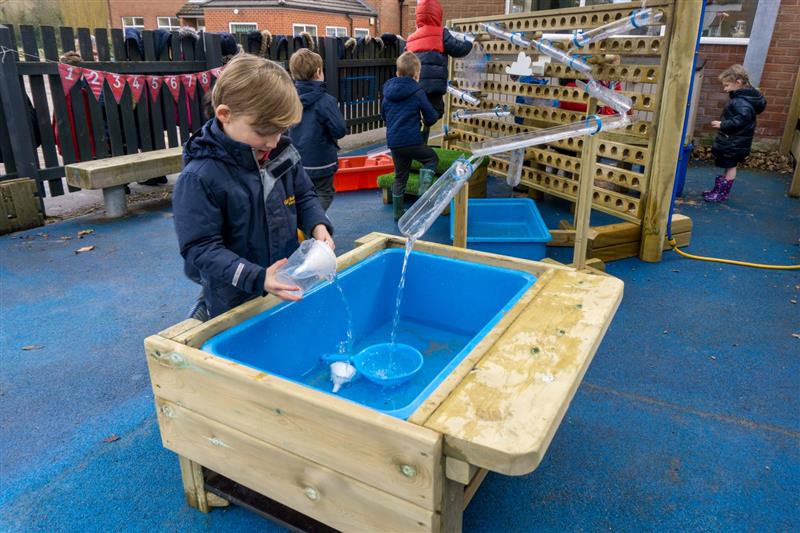
Why STEAM is so Important
STEAM learning takes an interdisciplinary approach, aimed at encouraging children to think more broadly about real-world problems.
With foundations based on inquiry, critical thinking, and process-based learning, it’s all about encouraging children to ask their own questions, think more creatively and work out their own innovative solutions to problems.
It’s a way of thinking and behaving as much as a learning process, based around deep questioning, which is hugely significant for modern society.
STEAM has helped to create innovations such as the laptop and the mobile phone, modern day robots and sustainable energy systems. It’s behind the discovery of life-saving medicines and methods for producing clean drinking water.
There’s not very much that we can do to survive as a species without it.
The logic behind using the STEAM approach is relatively straightforward: what sort of future do our children have to look forward to?
We talk to them as they get older about the idea of “working hard to get a good job that you enjoy” - but what does this actually mean for our children? What sort of jobs will actually exist and be accessible to them?
It’s so important that we provide learning environments that are relevant, consistently fluid and dynamic, fitting to the way that the world works today and how it will continue to work in the future.
A recent report published by the Social Market Foundation and EDF, which used analysis of government data and examined trends in the growth of science, research, engineering and technology jobs, found that such jobs in the UK are expected to grow at double the rate of other occupations, creating 142,000 jobs between now and 2023.
The research predicted that computing skills will be the most in demand, with the highest number of new jobs at 25%.
STEAM is where the future lies and our children can (and should be able to) enjoy learning about it from a young age.
The “Arts” part of STEAM is absolutely crucial and arguably what pulls it all together. This is where creativity, innovation and ingenuity comes in. With the arts, comes wonder and critique. They teach the power of observation and help remove inhibition when forming ideas (there is no right or wrong answer in creative arts).
Our economy requires a lot more than just an understanding of the maths and science based areas.
STEAM learning is fundamentally about asking quality questions, making real life connections and then seeking great solutions to the problems presented, so it’s absolutely a holistic approach to learning.
For younger children, inclusion of the arts component can make learning more fun and approachable too.
For example, a child learning to code for the first time will be less intimidated and more engaged if the learning program features something they are more familiar with, like an art component, where a child is solving a visual problem to create something that they enjoy or feel connected to.
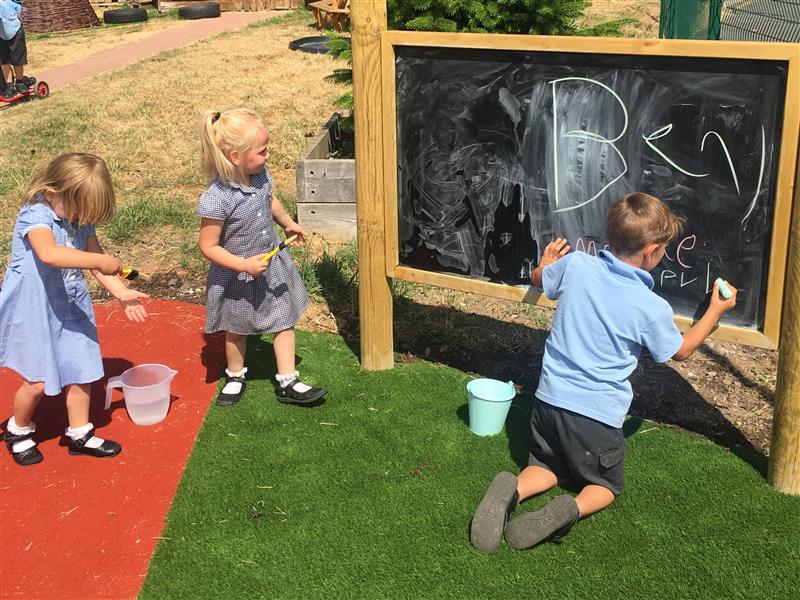
STEAM learning works most effectively when we open the classroom doors to the outside world and get to the heart of what learning is all about.
At nursery and primary school level in a particular, a well planned outdoor learning space can make all the difference. Of course, this won’t work for computing lessons and electronics, but there is much more to STEAM learning aside from computer science.
It’s in the outdoors, out of the confines of the classroom walls, where children feel more connected to the world. A place where they can draw more inspiration and naturally feel less restricted, less inhibited.
Even just on a practical level, it’s much easier to get creative and messy outdoors, to spread out and have space to explore and to think, to use their whole bodies and to embrace physical and investigative learning experiences.
Setting Up Your Playground for STEAM learning
Getting started with STEAM learning is a lot more simple than it may sound. There is so much out there that can be explored and there has been increased focus and investment in STEAM initiatives in schools in recent years.
Provision of computer labs and mobile devices for learning, coding programs, robotics programs, STEAM days to encourage hands-on exploration and investigative learning both indoors and outdoors, and after school STEAM based clubs, to name but a few.
As with most things, the best way to approach it will vary between schools, depending on curriculum design, available resources, funding and physical space and the children. Most schools will find that following an integrated approach, where teachers integrate STEAM into their daily curriculum and subject areas, works well.
In primary schools and nurseries, at EYFS, KS1 and KS2, the outdoor learning environment is an ideal place to facilitate many aspects of STEAM learning.
Natural resources to be discovered in the outdoor environment (water, weather, plants and wildlife etc) combined with specifically designed learning and play equipment make a great team!
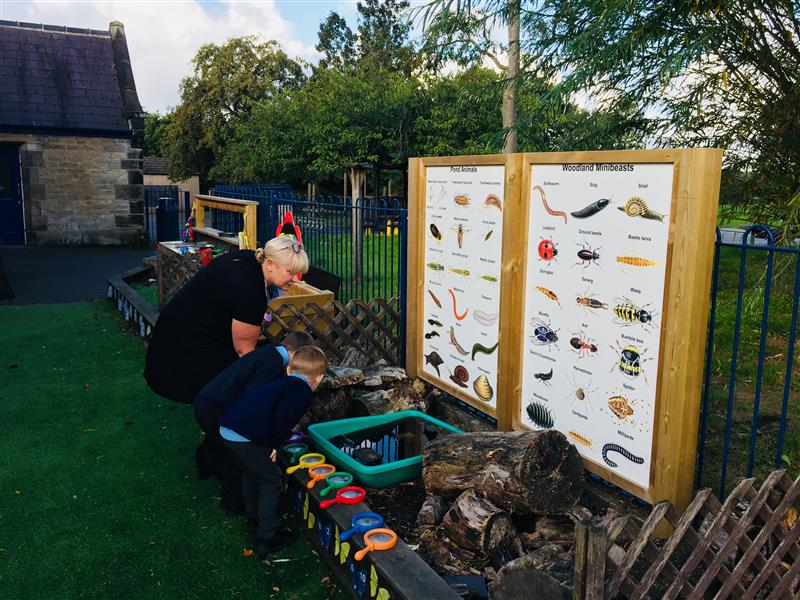
At Pentagon, our product designers and engineers work to inspire, with great ideas and thoughtful play pieces that get children really thinking and motivated.
We have a real passion for interactive outdoor experiences ourselves and this is reflected in the playgrounds that we design and install.
Product Spotlight
The following are some of our tried and tested and most popular products for integrating STEAM learning into your outdoor play and learning environment.
Water Play Equipment
With our Water Wall Packages, we can create energetic, interactive water play zones, where children design and build their own courses for water to travel. They are ideal for teaching the water cycle, kinetic energy and gravity, force and many more STEAM topics.
Our Damming Stations are apparatus that require collaboration as one team pumps the water and the other finds ways to block it, experimenting with different materials.
The Water Channels can be connected together and to other water play equipment to cascade water from one to another. They are perfect for teaching about water systems, rivers and canals, developing critical thinking and problem solving skills.
Mud Kitchen, Mud Boxes and Dig Pit
Imaginary play and experimentation with natural materials, measurements, cause and effect all combine with these wonderful and great fun Messy Play Resources.
Sand Table
Our Sand Table has always been a popular play resource and sands changing characteristics are great for imaginative thinking, understanding resources and experimental, investigative play.

Tuff Spot Table
Set at standing height for young children and designed with sliding boxes for convenient storage, children can investigate and explore materials and resources of your/their choosing with the Tuff Spot Table.
It’s easy to wipe down and the edges prevent drips and spillages, so it’s practical for messy science experiments.
Construction Table
Our Construction Table is perfect for storing and playing with a range of construction toys - building and pulling apart, redesigning and rebuilding. It's essential for developing engineering skills and the confidence to test, accept and learn from mistakes and discover new ways of doing things.
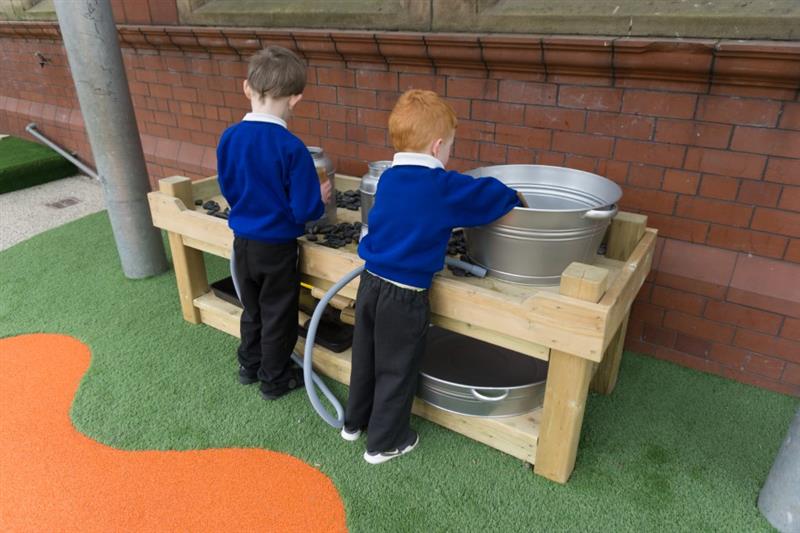
Rope and Pulley Materials Mover
The Rope and Pulley Materials Mover creates brilliant fun for early learning and understanding of mechanisms, essential teamwork and communication, manoeuvering a range of materials from A to B.
It can also be connected and used in conjunction with other resources.
Weighing Scales
Our Weighing Scales can be used for exploring mathematical concepts including measurements and metrics, exploring cause and effect, density of materials, developing action language, predicting outcomes and understanding the need for teamwork.
Wildlife Area, Potting Table and Bug Hotel
Our Natural Playground Equipment are outstanding products for schools and nurseries wishing to encourage children to explore the natural world, engaging first hand with wildlife, observing, interacting and experimenting.
Children can learn all about survival, human impact and social responsibility, chemical influences and processes, lifecycles and food chains and a whole host of other natural science topics.
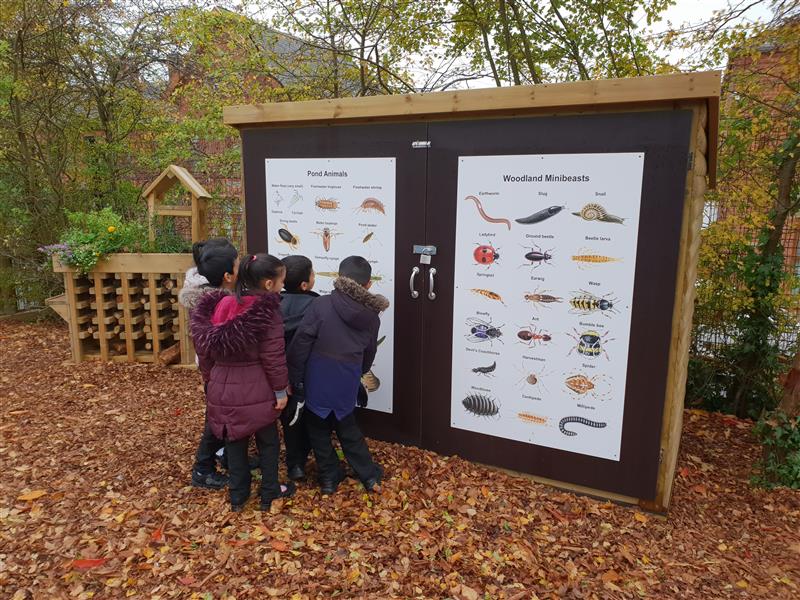
Sensory Arbour, Outdoor Musical Instruments and Sound Panels
Children can experience and experiment with light and sound, audio and visual stimulation and discover how sound and light travel, influences and impacts with our Sensory Play Equipment and Outdoor Musical Instruments.
They provide creative scientific learning and confidence building at the same time.
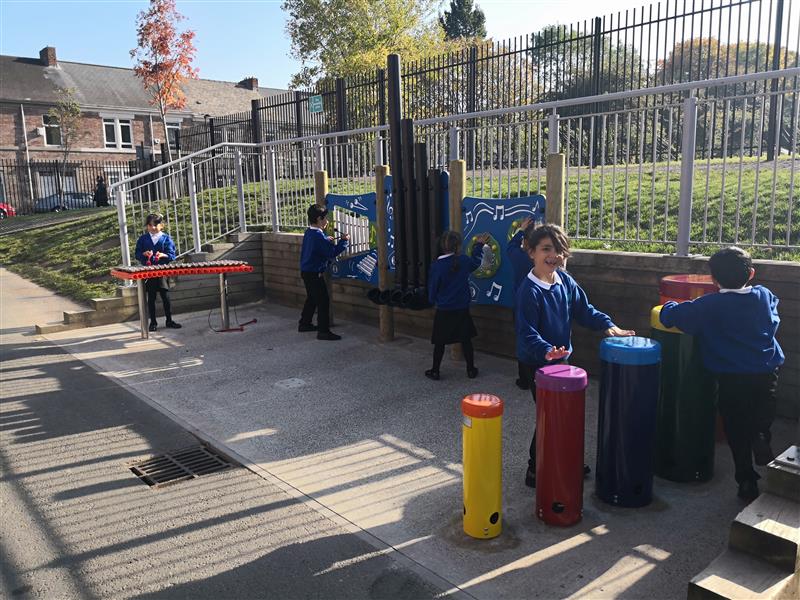
Mark Making Panels
Our range of outdoor Mark Making Panels, including Poster Paint, Chalkboard and Whiteboard panels are ideal for encouraging children to enjoy large scale and creative, expressive art in the outdoors, essential for developing their ability to create and innovate.
They are handy support resources too, allowing children to record and reference their thoughts.
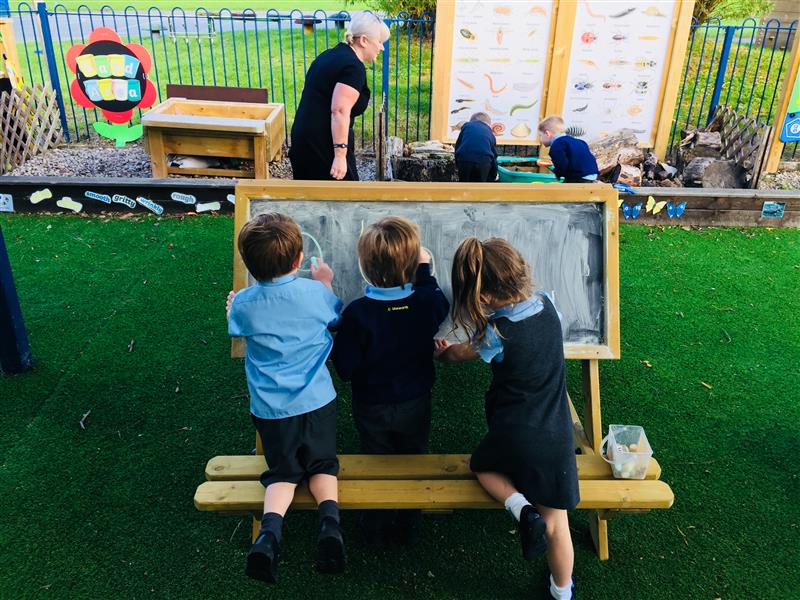
Den Making Equipment
Building dens in all shapes and sizes and out of a wide range of materials is essential STEAM play for children of all ages. Our Den Posts, Wigwams and Playhouses are popular resources for engineering bases.
Children have to think logically, innovate, solve problems and correct mistakes to design and build their dens.
They can experiment with weight, joins, tipping points, how to make dens water-tight, stronger, how foundations work and so on. A good activity for teamwork and thinking outside of the boundaries.
If you would like to improve your school or nursery playground to support STEAM learning, please do not hesitate to Contact Us Here, at Pentagon, we design and install enthralling, interactive outdoor learning spaces.
We will help at all stages of the process, from initial free consultation and advice, design and layout planning, through to complete installation and finished result. Our team includes education experts with first hand experience of teaching, who can help you make sure that you get the best fit for your school. We’d love to hear from you!




.jpg)
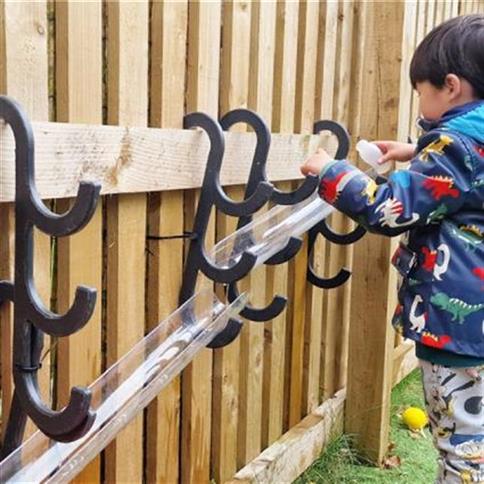
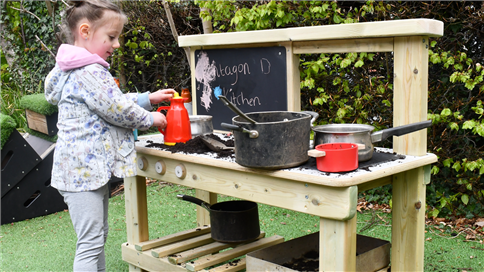

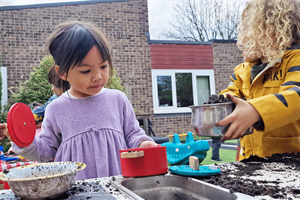
 (Custom).jpg)